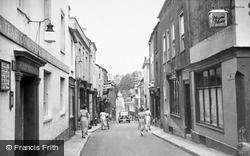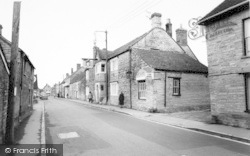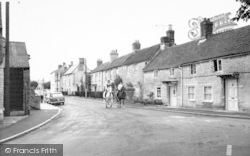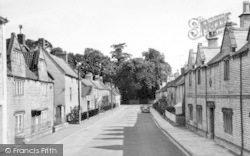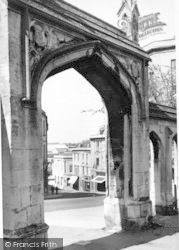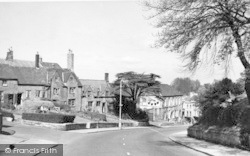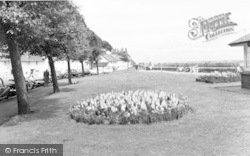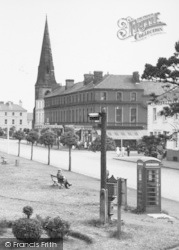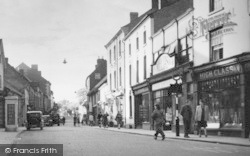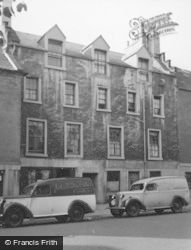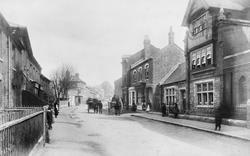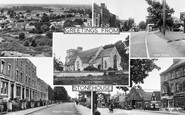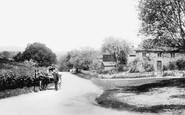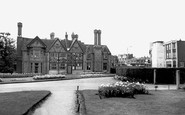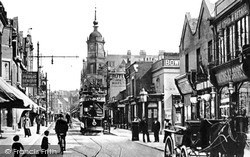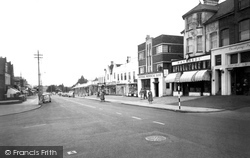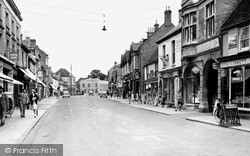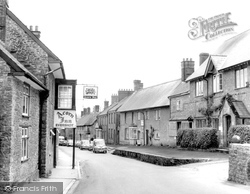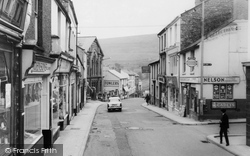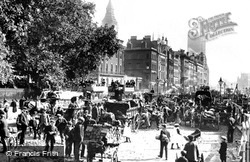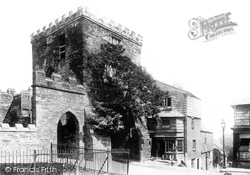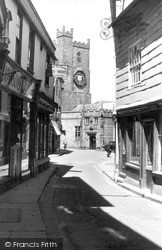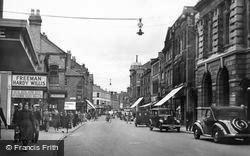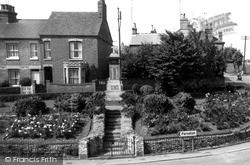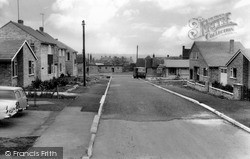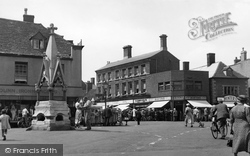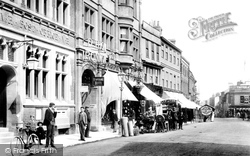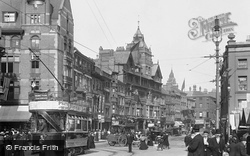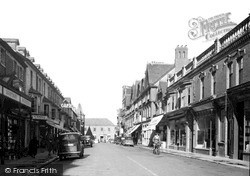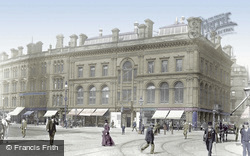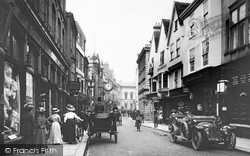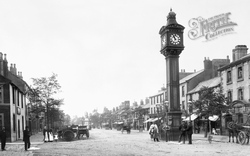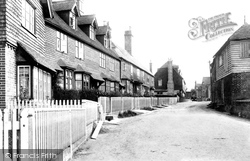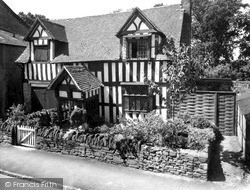Places
36 places found.
Did you mean: street or streetly ?
Those places high-lighted have photos. All locations may have maps, books and memories.
- Heathfield, Sussex (near Cade Street)
- Street, Somerset
- Chester-Le-Street, Durham
- Adwick Le Street, Yorkshire
- Scotch Street, County Armagh
- Friday Street, Surrey
- Potter Street, Essex
- Boughton Street, Kent
- Newgate Street, Hertfordshire
- Streetly, West Midlands
- Shalmsford Street, Kent
- Green Street Green, Greater London
- Boreham Street, Sussex
- Park Street, Hertfordshire
- Cade Street, Sussex
- Appleton-le-Street, Yorkshire
- Hare Street, Hertfordshire (near Buntingford)
- Romney Street, Kent
- Trimley Lower Street, Suffolk
- Streetly End, Cambridgeshire
- Hare Street, Hertfordshire (near Stevenage)
- Brandish Street, Somerset
- Colney Street, Hertfordshire
- Langley Street, Norfolk
- Silver Street, Somerset (near Street)
- Street, Yorkshire (near Glaisdale)
- Street, Lancashire
- Street, Devon
- Street, Cumbria (near Orton)
- Street, Somerset (near Chard)
- Bird Street, Suffolk
- Black Street, Suffolk
- Ash Street, Suffolk
- Broad Street, Wiltshire
- Brome Street, Suffolk
- Penn Street, Buckinghamshire
Photos
24,920 photos found. Showing results 3,081 to 3,100.
Your search returned a large number of results. Please try to refine your search further.
Maps
1,622 maps found.
Books
3 books found. Showing results 3,697 to 3.
Memories
6,666 memories found. Showing results 1,541 to 1,550.
Old Funeral Home On Jackson Street
I remember the old funeral home on Jackson Street, or as I knew it as, Jackson Chare, eee it was a long time ago, old man died there in what is now the Co-op, died there shortly after he opened it one day, long ...Read more
A memory of Gateshead in 1940 by
Good Times
I came across this site today and was taken back to my childhood. I was born in Netherfield at 21, Hodgkinson Street in September 1957, the daughter of Brian and Barbera Pritchett, and 2 years later had a brother ...Read more
A memory of Netherfield by
Ravenfield Street Tickhill Street Denaby Main
I loved living in Denaby, when I was a nipper, should I roam into the ajoining streets; I remember neighbours giving me a friendly shove back to my own end with their walking sticks! We never ever ...Read more
A memory of Denaby Main in 1956 by
My Grandparents
My grandmother Rose nee Shufflebottom and my grandad Samuel Rayson who was a miner at the Wakefield pits in around the 1920s would love to know more about their history and see old pictures of Cudworth in and around Somerset ...Read more
A memory of Cudworth
Memories Of Broughton During The War
Hi all. My brother and I were evacuated to Skipton in late 1941 from London. As we all sat on the floor in some large hall in Skipton after out trip up from London, people were walking ...Read more
A memory of Broughton in 1941 by
Childhood 1952 Onwards
I think Stonehouse had something for every age growing up. Brownies, cubs, scouts, and guides. A youth club and a coffee bar. Always somewhere to explore, the canal, Doverow for sledging, the brickworks and always ...Read more
A memory of Stonehouse in 1952 by
Ryders Folklore
These cottages are now known as Ryders, but it appears that in Edwardian times the place (or maybe this corner) may also have been known as "Seven Trees Well": I have a postcard with this picture on it sent on 7th May 1906 to ...Read more
A memory of Okewood Hill in 1900 by
Growing Up In Lea Road Southall
I lived in Lea Road, Southall. My father Alfred was a lorry driver for Sanders & Son, also known as The Tube, half way down Gordon Road. My mum Betty worked as a manager of Bill Taylors newsagents just off the ...Read more
A memory of Southall in 1968 by
Memories Of Leadgate
I remember Leadgate way back in the 1950s. We were lads from Medomsley Edge Homes who went to the pictures there, I think the place was the "Roxy". We went to school with lads from Leadgate. Two of them I remember well - ...Read more
A memory of Leadgate in 1950 by
Bandstand In The Park
In the 1930s I lived only a few hundred yards away from the bandstand in the park (in Rice Street) and walked there so many times. A band would often play on Sunday evenings.
A memory of Aberavon by
Captions
5,435 captions found. Showing results 3,697 to 3,720.
Regent Street, in this picture, reflects the commercial activity. The post box on the right is the same style as is used today.
It is odd that the street lighting is only on the left side of the road, supported by the telephone poles.
William Seward, a major businessman in the town during the early years of the century, built a new boot and shoe shop in the High Street in 1901 and followed this up with other new premises in
Wimborne Street c1955 Thomas Hardy writes of a journey into Cranborne in ‘Tess of the D’Urbervilles’, where the present Fleur-de-Lys tavern is depicted as the much less salubrious ‘Flower-de-Luce
We are looking down the street in the opposite direction to photograph B672001, with the Forge Hammer now on the right.
Serious building work is in progress in this normally sedate street. On the extreme right an area has been cordoned off with barriers, and beyond are the towers of hoists and cranes.
On the left is the gable end of Hildreds Hotel - demolished in 1987 - and at the centre are what were then the newly-built underground lavatories with a domed ventilator surmounted by a street lamp.
The steep little street next to Jesse S Raddall (now a bistro called Three Steps to Heaven) is Angel Hill.
Like many premises in town, the frontage has changed at street level, but above the slates remain as they always did.
The steep little street next to Jesse S Raddall (now a bistro called Three Steps to Heaven) is Angel Hill.
The domed building, the Old White Horse and the overhead street lighting have also disappeared.
Here we can see the war memorial at the junction of High Street, Wollaston Road and Farndish Road, with steps leading up to the tall monument surmounted by a cross.
Now within the village, Frith's photographer looks down one of the estate roads, with their undistinguished 'Anywheresville' modern houses, towards the High Street.
Gothic-style drinking fountain of 1860 has been relocated to the cemetery in South Road, presumably to save it from the traffic, while the good stone-tile-roofed building beyond on the corner of South Street is
Here, a few street vendors have set out their stalls.
Note the complexity of building styles along the street line – the Victorians had no concern for harmony or for what was appropriate.
There is no such thing as an ordinary street in this town. True, the shops may have similar uses, but the Victorians made the most of the spa town by building wide, airy thoroughfares.
The elongated Venetian window added a continental look to the street. The building is now demolished.
During the Edwardian era, Coney Street was the place for fashionable shopping.
The ivy-clad King's Head public house, on the right, is a popular local hostelry, although the gallows-type pub sign out in the street has long gone.
The clock tower dominates the main street of this West Cumberland town.
Further up Church Street, these late Victorian terraces of cottages, numbers 12 to 20, adopted the Sussex vernacular style with tile-hung upper floors, bay windows, dormers and tiled roofs.
A guidebook in 1795 described Weobley as having 'a few small streets meanly constructed, without either market or traffic'.
The road is widening as we look back towards the High Street. Owen the pharmacist was at No 61 (right) until 1958, next door to the King David Inn, which was to close in 1973.
Places (385)
Photos (24920)
Memories (6666)
Books (3)
Maps (1622)



